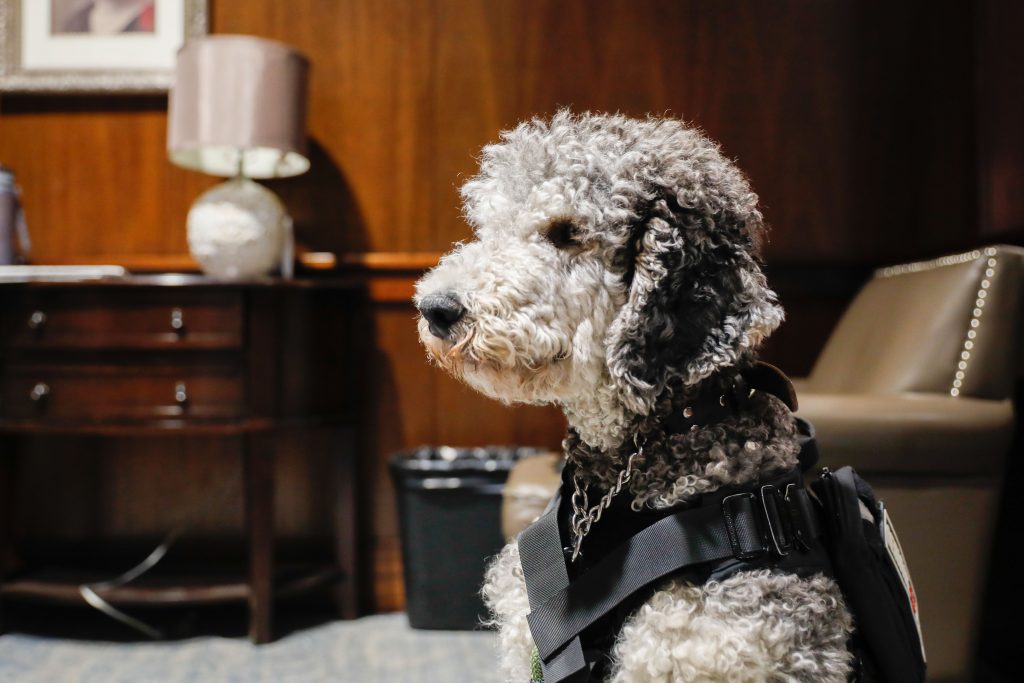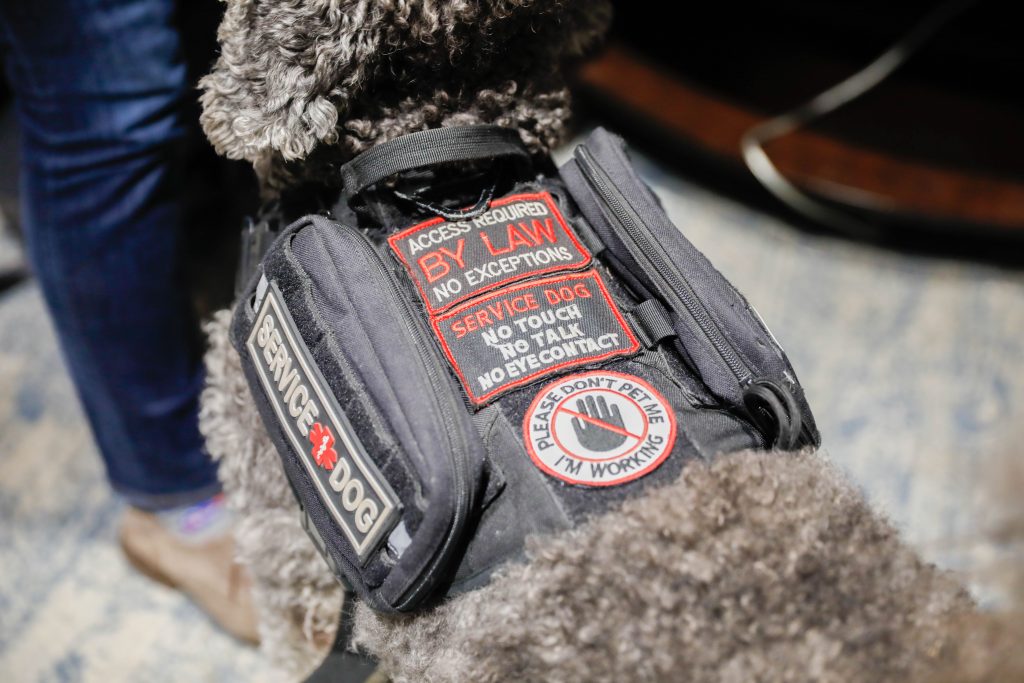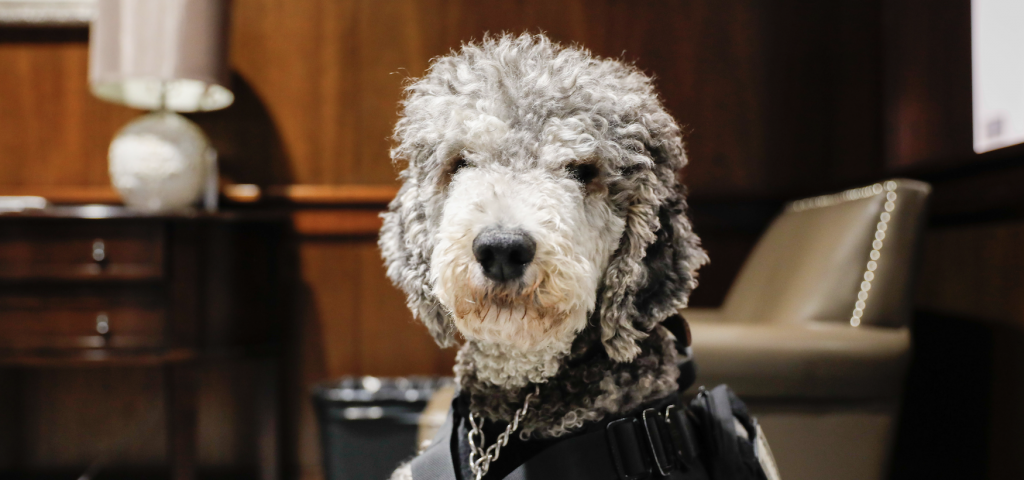Dogs are man’s best friend, but service dogs go beyond companionship. Just as people have jobs, service animals on campus work every day. There are two main ways that animals serve on campus: as a service animal or as an emotional support animal.
“Service dogs are the only animals that are allowed to be a service animal on our campus and come in the buildings (the only other service animal is a small horse),” Jacqueline Johnson, Office of Disability and Support (ODAS) director of residential students, said. “An emotional support animal (ESA), can be almost anything — a dog, a cat. They have to have a note from their diagnosing counsellor or psychiatrist saying that a service animal would be a good thing for them, but those animals cannot leave the room.”
ESAs, though commonly thought of as cats or dogs, are not limited in species like a service animal. They can be any animal that renders a service to the student that is included in a note from a diagnosing professional. Johnson said ESAs have included “snakes, tarantulas, and someone has had a chameleon.”

While there is a benefit for the students that use ESAs, Johnson explained that there are multiple guidelines to follow for having ESAs in the dorms for the animal’s safety and the safety of others.
“A positive note about navigating Liberty with a service dog is that the ODAS staff truly care for us and helped us have equal access like all the other students,” Alexandria Nieves-Sanchez, a Liberty student with a service dog, said.
The most commonly recognized animal role on campus is the service dog. Service dogs render an important service to their owner and help them complete daily tasks.
“Moose’s (my service dog’s) medical response work is focused on managing PTSD and an anxiety disorder,” Kaitlyn Downs, another student with a service dog, said. “One of her response tasks is Deep Pressure Therapy or DPT. She will either lay across my legs while I’m sitting down, or I will lay on the ground and she will use her entire body to lay on my chest. Her weight helps my body to release endorphins, which can help prevent or stop an episode.”
Unfortunately, some people misunderstand the role of service animals in society and try to distract or pet these service animals hard at work. Like Moose, these dogs are working hard not just as loyal companions but for the safety of their owner.
“She is a service dog who is now being distracted from paying attention to and working for her handler,” Downs said about people approaching her dog.

According to Downs, this is not to dissuade people from approaching them, but “remembering to see and talk to the handler is just as important, if not more important than only recognizing and talking about a cute dog.”
“The world isn’t always so welcoming of the handler and their service dog,” Nieves-Sanchez said. “So, I ask, please be kind, please be patient and know that we are people just like you, taking it one day at a time, trying to live life to the fullest.”
For more information about service dogs and emotional support animals on campus, visit the ODAS website.
Auld is a feature reporter for the Liberty Champion
